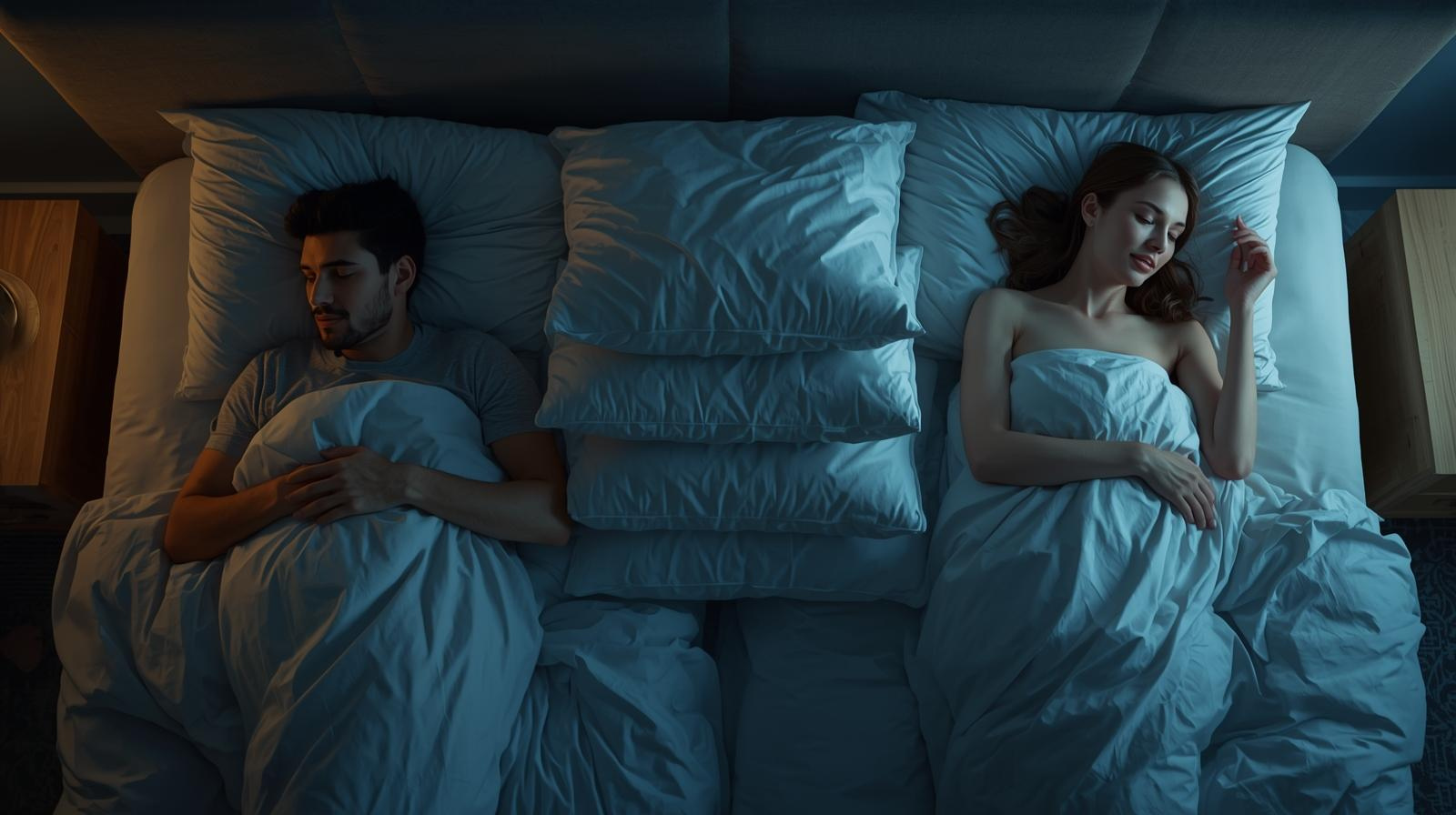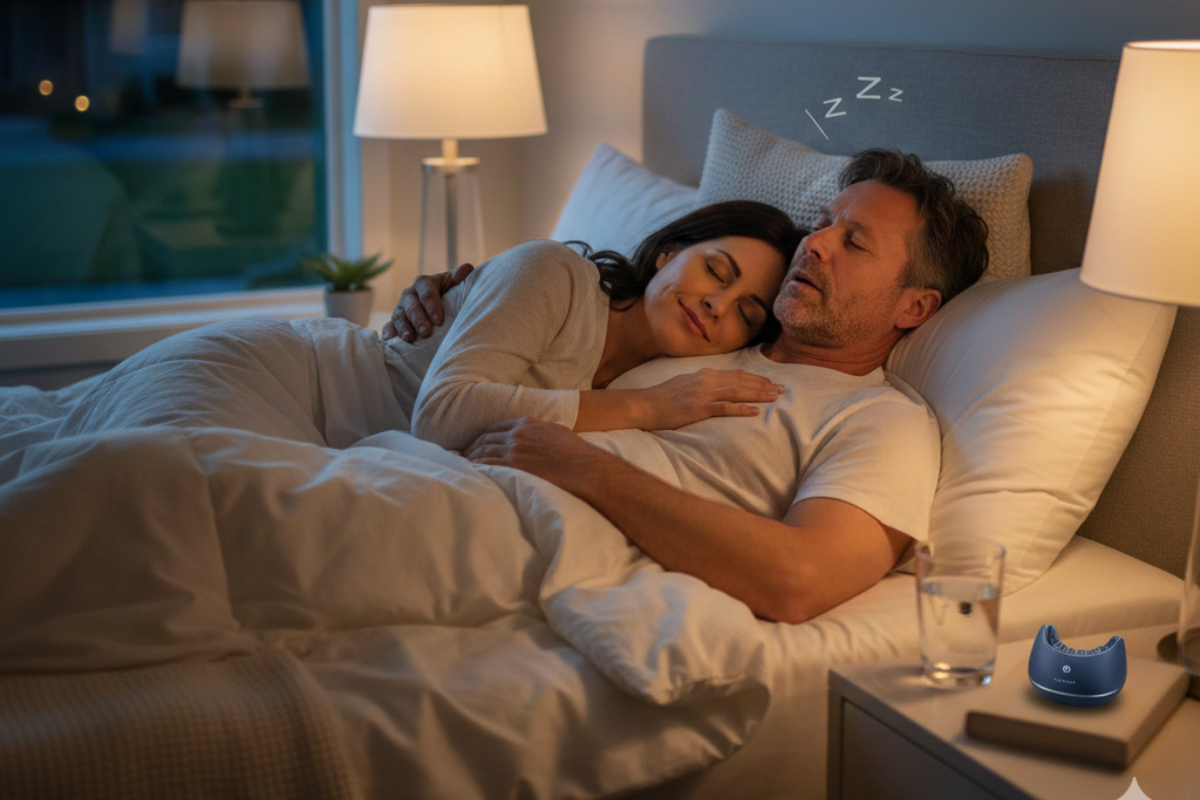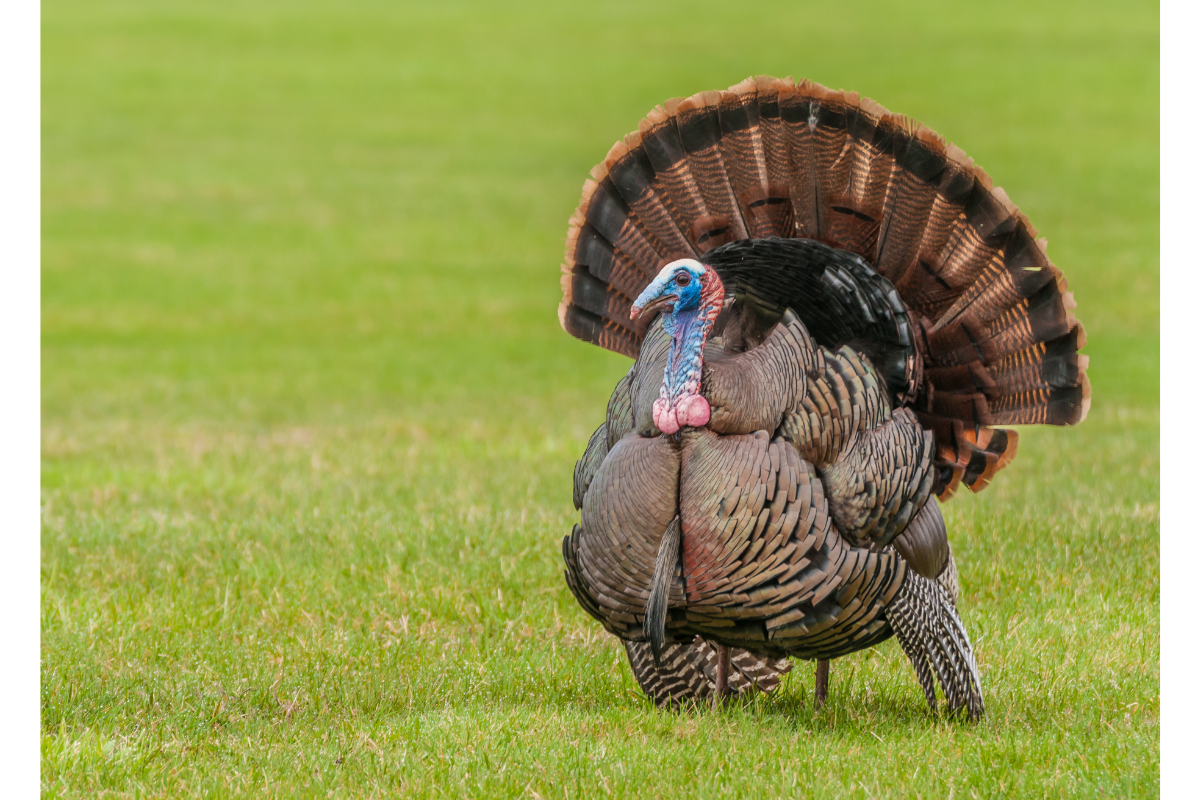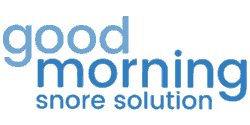Free Shipping - On Orders Over $175 (USA, Canada, UK, & AU)

Seeking A Solution For Sleep Apnea: Snoring Mouthpieces vs CPAP Machines
January 17, 2017 4 min read
Obstructive sleep apnea (OSA) is a condition which affects millions of Americans every day – over 18 million, according to the National Sleep Foundation – and the numbers are continuing to rise each year. A study published in the American Journal of Epidemiology revealed that over the past two decades, sleep apnea has increased from 14 to 55 percent, depending on a person’s age and gender.
The effects of sleep apnea go beyond snoring and disrupting your partner’s sleep. The level of sleep disruption which OSA causes can result in irritability, memory or learning difficulties, and headaches. Because of the prevalence of OSA in society today, a number of devices and technologies like sleep apnea mouthpieces and CPAP machines are being used to alleviate the symptoms of this common health problem.
What Is A CPAP Machine?
CPAP (an acronym for “continuous positive airway pressure” therapy) uses a machine to help an OSA sufferer to breathe more easily while they sleep. A mask or prongs which fit into the nostrils are put in place prior to going to sleep. The machine delivers a flow of air which increases the air pressure in your throat, and this forces your airway to stay open rather than collapse when you breathe – which alleviates snoring and other sleep disrupting symptoms.
The Problems With The CPAP Machine
The CPAP machine is the most common doctor-prescribed method to alleviate OSA, but it is not the ideal solution for many OSA sufferers.
- The mask can be uncomfortable and interfere with sleep despite wearing the correct mask size
- The mask can irritate a user’s skin and irritate the nose
- Poorly constructed or ill-fitted masks can leak air, rendering the device less effective
- More sensitive users may find the pressure of the CPAP bothersome
- The tubing can interrupt ones sleep
- Users may remove the mask during the night without knowing it
- The air may be too cold, too hot or too dry, and cause discomfort
- Some may find using a CPAP for snoring embarrassing as it's a large and clunky piece of equipment
- Those suffering from nasal congestion (which is also a side effect from using the machine) may find using the CPAP device difficult, if not impossible
- The machine may be loud, and interfere with sleep
- Claustrophobic OSA sufferers are not good candidates, unless they have “desensitization training” which may not work
When used correctly and regularly, the CPAP machine is an effective way to reverse upper airway obstruction. Unfortunately, for the issues listed above, and other user difficulties, the adoption and adherence rate to this prescribed therapy is low. One study found that 46 to 83 percent of patients with OSA were non-adherent to treatment (where more than four hours of use was defined as “adherence”).
Snoring and Sleep apnea Mouthpieces As A Viable Alternative
CPAP machines may have a low adherence rate, but according to many studies, oral appliances such as snoring and sleep apnea mouthpieces have a much higher rate of compliance.
- 71 to 75 percent of patients complied with using a dental orthosis
- 50 to 75 percent of patients complied with using an anterior mandibular positioning (AMP) device to alleviate their OSA
- 68 to 93 percent of patients complied with mandibular advancement treatment for their OSA
Tongue Stabilizing Devices Vs. Mandibular Advancement Snoring Mouthpieces
There are two general categories which a snoring mouthpiece may fall under:- Mandibular advancement device (MAD)
- Tongue stabilizing device (TSD). Also known as a tongue retaining device (TRD)
- Those who use MADs can suffer from excessive pain and soreness in their jaw
- Users with a strong gag reflex may have difficulties using a MAD
TRDs are proving to be the more preferred way to put a stop to snoring and OSA. Typically made of a soft plastic (such as silicone), the TRD can be easily inserted without a user needing to bite down or hold it in place. The device includes a tip which, when placed on your tongue, creates suction. The tongue cannot fall backwards and obstruct your airway, and thereby promotes a snore-free sleep. Your jaw will not be sore after using the TRD device, as users are able to fully relax their mouth and enjoy a more restful sleep. The problem with both MADs and TRDs is that not every one is effective.
With snoring and sleep apnea being so prevalent worldwide, a number of poorly constructed products have entered the marketplace. This makes it all the more important for those suffering from any type of breathing or sleep-related problem do their due diligence and find a device which is backed by studies and scientific evidence – like the Good Morning Snore Solution.
Seek A Medically Proven Alternative
The issue which obstructive sleep apnea (OSA) sufferers face when selecting a mouthpiece is to find one that is backed by strong medical evidence that confirms that it can, in fact, provide relief from sleep apnea. Another challenge is finding a sleep apnea mouthpiece which is comfortable and does not result in jaw soreness, headaches, and other negative side effects. The Good Morning Snore Solution mouthpiece is the ideal solution for many who suffer from OSA. This clinically proven device does not force your jaw into uncomfortable and unnatural positions like other mouthpieces. Instead, it is designed to subtly hold the tongue forward through the use of suction, keeping the airway open for as long as the device is in use.
One clinical study conducted by researcher, Dr. Leslie Dort, found that the device reduced the Snoring Index (which measures the average number of snores per hour) by nearly 40%, achieving a significant improvement in night time snoring. The device also reduced the Respiratory Disturbance Index (a measure of the number of sleep disturbances divided by the number of hours sleep) by at least 50%, resulting in a clinically significant reduction in the number of disturbances to less than 10 per hour. Finally, four out of five subjects with severe OSA (RDI>30), showed reduction in RDI of at least 50%.
References
https://sleepfoundation.org/sleep-disorders-problems/sleep-apnea https://sleepfoundation.org/ask-the-expert/sleep-and-cpap-adherence https://www.sharecare.com/health/sleep-apnea-treatment/what-disadvantages-cpap-sleep-apnea http://www.ncbi.nlm.nih.gov/pubmed/23589584 http://www.atsjournals.org/doi/full/10.1513/pats.200708-119MG#.Vo3DcrYrKkk http://www.ncbi.nlm.nih.gov/pubmed/2036819 http://www.ncbi.nlm.nih.gov/pubmed/8442597 http://www.ncbi.nlm.nih.gov/pubmed/8143054) Copyscape checked & rechecked
Also in Blog

💨 Are Your Nighttime Breathing Issues Robbing You of Your Health and Your Energy?
December 12, 2025 3 min read
Breathing issues during sleep, collectively known as sleep-disordered breathing, are a major public health concern.

Is Your Snoring a Sign of Something More Serious? Unpacking the Science of Sleep
December 05, 2025 3 min read
When you snore, what's actually happening?

Can Turkeys Snore Or Get Sleep Apnea?
November 26, 2025 2 min read
Join our Insiders Club
Every week you will receive specials, discounts, and giveaways.
Categories
- Better Sleep
- depression
- Fitness
- funny animal
- Global Citizenship
- health
- Mental Health
- mouthpiece
- nutrition
- pillow
- Productivity
- relationships
- sleep
- sleep apnea
- sleep deprivation
- Sleep Tech
- snoring
- snoring humor
- snoring jokes
- snoring sounds
- stop snoring
- StopSnoringStartLiving
- technology
- Tongue displacement
- travel
- video
- Young Adult
Recent Articles
- 💨 Are Your Nighttime Breathing Issues Robbing You of Your Health and Your Energy?
- Is Your Snoring a Sign of Something More Serious? Unpacking the Science of Sleep
- Can Turkeys Snore Or Get Sleep Apnea?
- Foods from Every Food Group which Promote Sleep
- How Weather Changes Ruin Our Sleep (And How To Fight It)

